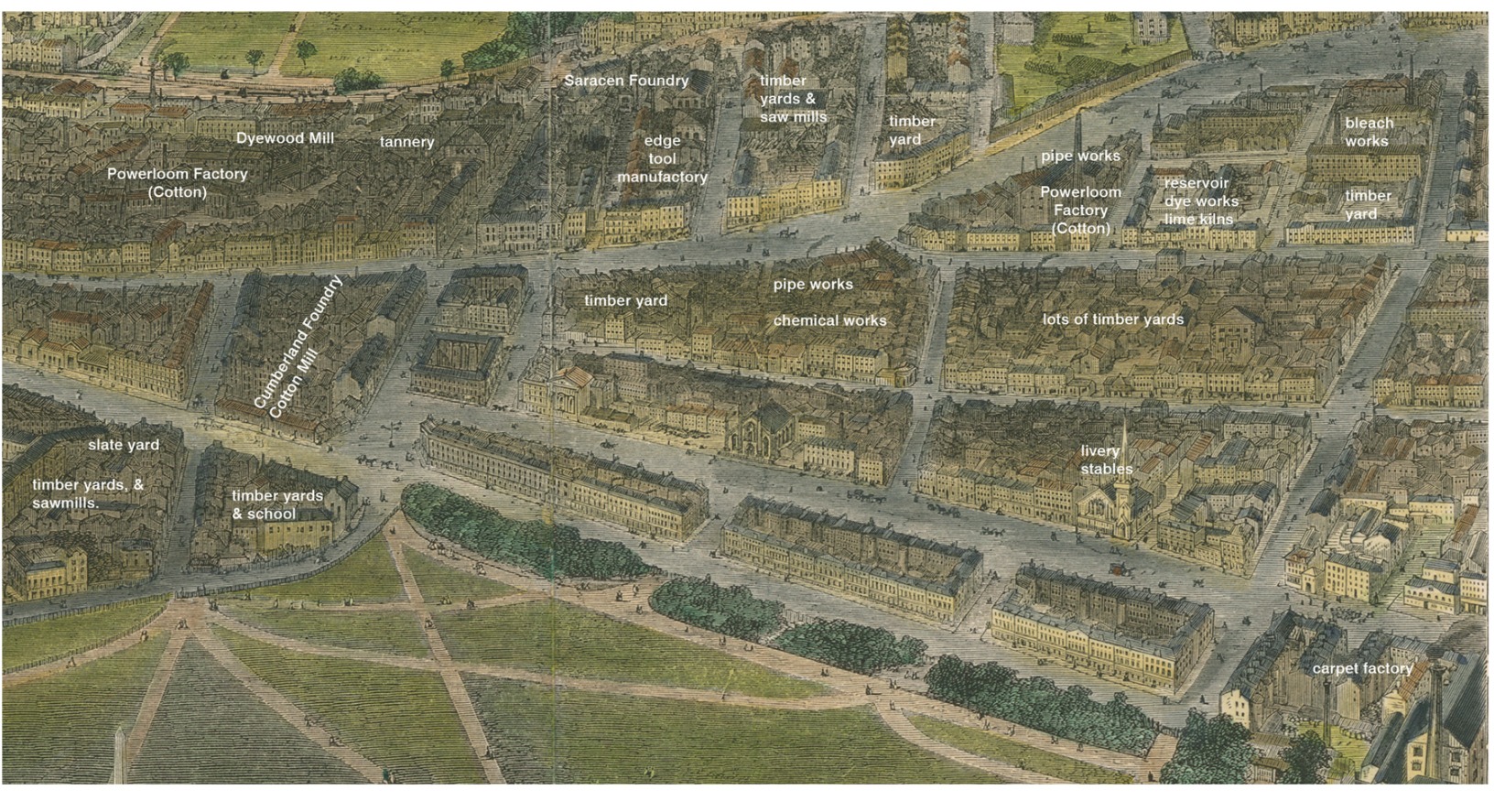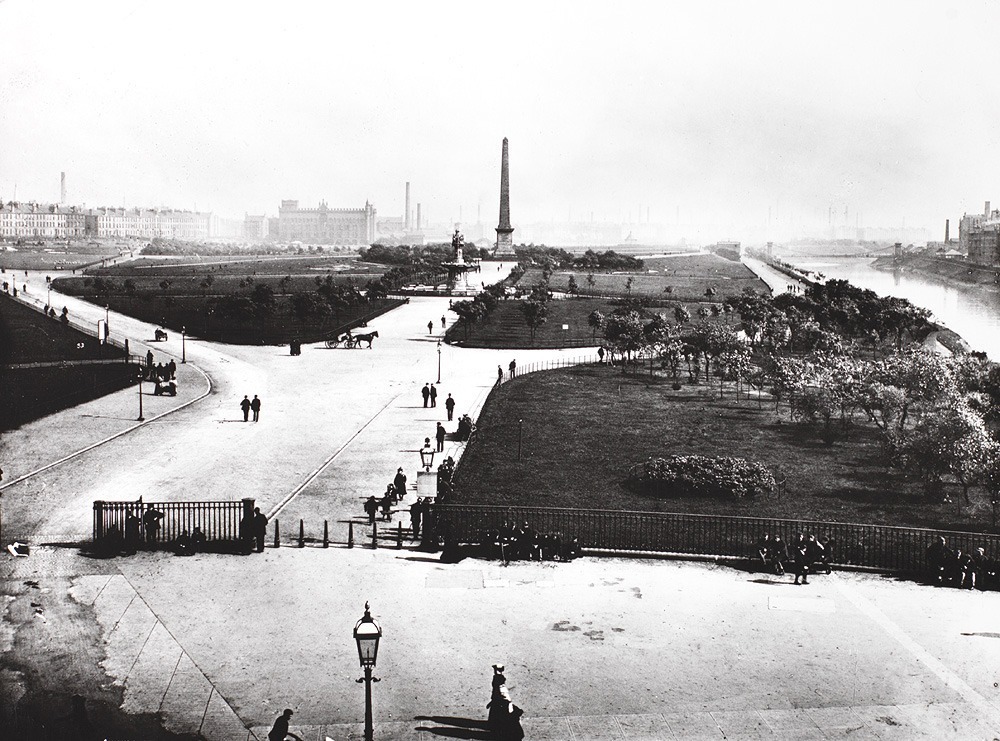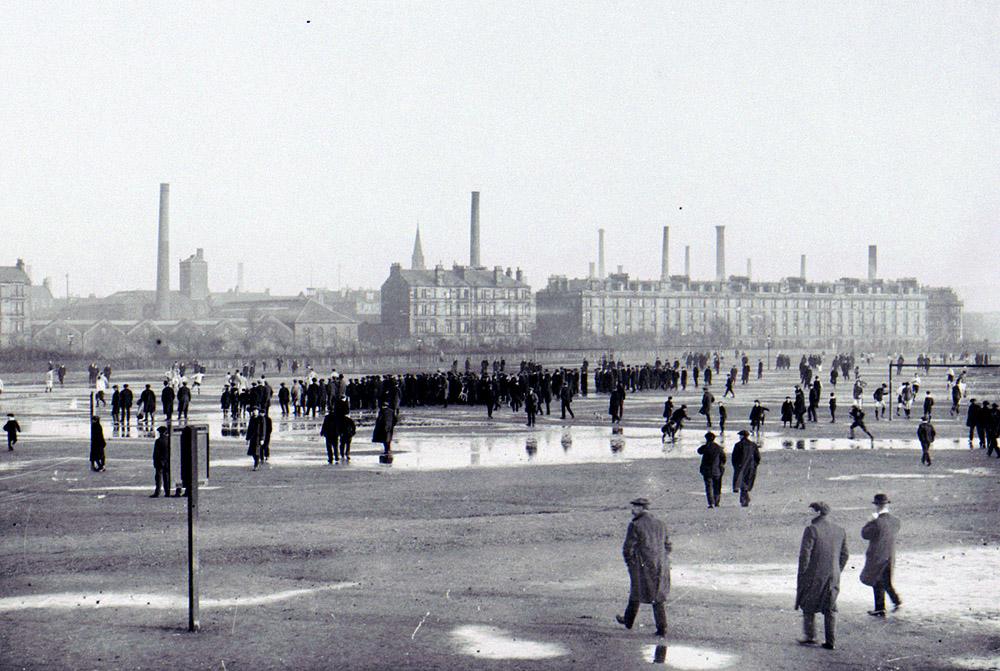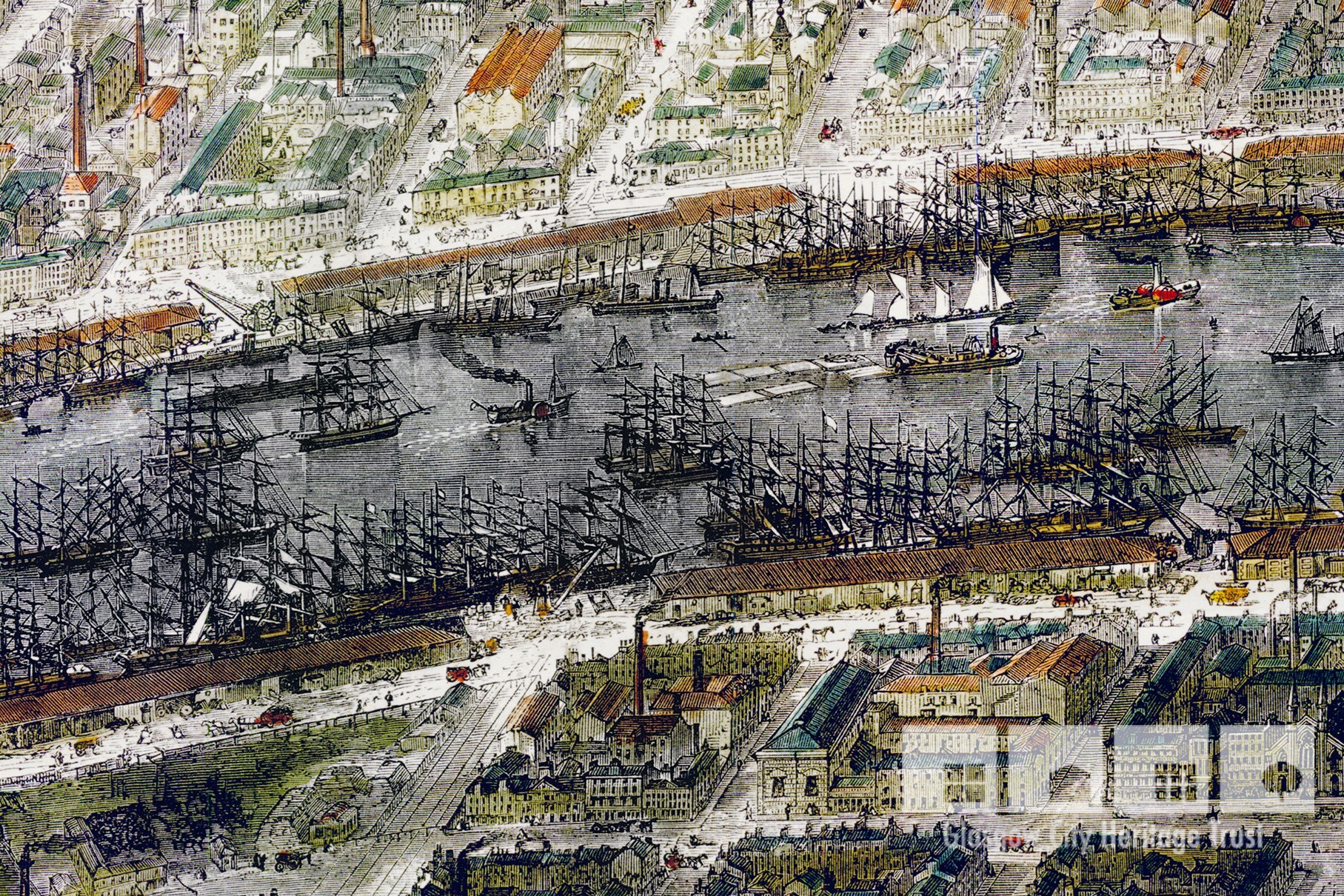A WOMAN’S WORK IS NEVER DONE…
She’s spent her morning so far getting the household chores done. It’s the best time for it- wee George heads out to the match factory at the crack of dawn, then Thomas and Edward aren’t long behind him, so she does what she can whilst the house is empty. It’s a room and kitchen they’ve got, so a bit more space than those families stuck in the single ends, but still cramped with the four of them there. They tend to spend most of their time in the kitchen and she tries to keep the ‘good room’ nice, although the boys have to sleep in there of course.
Now she’s on her way to her shift at the carpet factory. It’s demanding and exhausting work, so she’s glad of this wee breather as she walks through Glasgow Green- a moment to clear her mind between the demands of home and work.
A MOTHER’S LOVE
There’s Agnes her neighbour, busy getting her washing hung up. She gives her a wee wave and a hello. She’ll need to get down here herself tomorrow with her own washing. Oh, it’s never ending, but at least she can have a gossip with the other woman whilst she sorts the laundry. She’s glad her daughter Lizzie has found a good situation out in the West End, but she misses the female company in the house, and the extra pair of hands in the battle to keep it clean. She hopes Lizzie’s head’s not turned by the splendour of her new environment. She tells some stories on the rare occasions she makes it home for a visit. It’s a different world, and yet only a couple of miles away…
She’s so proud of her Edward too. Rarely touches a drink that one, and he’s always heading off to one of his Temperance Society meetings. He’ll make something of himself, of that she’s sure.
YOUR HEALTH IS YOUR WEALTH
She’s coughing again. It’s getting more persistent these days, she fears the fluff from the carpets she weaves has got into her lungs and dear knows what damage its doing. It’s not just her own health she’s worried about, she’s concerned about the phossy jaw some of them used to get from working at the match factory, although apparently it doesn’t happen so much these days. She hates sending George out to work at his age, but they just can’t manage without his wages, meagre as they are.
Thomas isn’t getting any younger either and recently there’s more often been days when he hasn’t been taken on by the foreman. She knows it makes him feel wretched so she tries to keep his spirits up and makes sure he doesn’t know how anxious it makes her, trying to work out how they’ll balance the shortfall. It caused a bit of a fuss when she announced to her family she was marrying an Irish man, and there was some consternation from his lot too. The Irish tend to keep to themselves when it comes to marriage, and find someone within their own community. But they’ve toughed it out for over 20 years now the pair of them.

LOOMING INDUSTRY
The carpet factory is in sight now and she knows the brief respite is over. She fills her lungs as she looks around, surveying the vast and ever expanding industrial landscape. Everywhere you look there’s chimneys, pelting out endless streams of smoke. Below the chimneys there’s warehouses, factories, mills and workhouses, full of hard working people just like her.
OUR INSPIRATION
DIRT, DAMP AND DECAY
Frederick Engels, writing in his famous Conditions of the Working Class in England, 1844, had this to say about the condition of working class housing in Glasgow:
“I have seen human degradation in some of its worst phases, both in England and abroad, but I can advisedly say, that I did not believe, until I visited the wynds of Glasgow, that so large an amount of filth, crime, misery, and disease existed in one spot in any civilised country….In the lower lodging houses, ten, twelve, or sometimes twenty persons, of both sexes and all ages, sleep promiscuously on the floor in different degrees of nakedness. These places are generally, as regards dirt, damp, and decay, such as no person of common humanity would stable his horse in.”
This vivid description gives some indication of the hardships working class families would have faced just to keep their homes clean and respectable. Overcrowded and damp tenements encouraged tuberculosis and rheumatic diseases. Fever epidemics regularly raged through the city until the 1870’s.
OCCUPATIONAL HAZARD
Living conditions weren’t the only thing detrimental to people’s health in those days. Respiratory illness rose as heavy industry led to unprecedented level of environmental pollution. Without the Health & Safety regulations that govern employment today, those working in 19th century Glasgow would have faced exposure to a range of dangerous and potentially life threatening situations. ‘Phossy jaw’, or phosphorus necrosis of the jaw to give its proper name, was an occupational disease affecting those who worked with white phosphorus without proper safeguards. It was most commonly seen in workers at match factories. Textile industry workers often suffered from rheumatism and asthma.
PARKS AND RECREATION
Glasgow Green dominates the bottom right hand corner of Sulman’s map. Amongst the crowded streets and riverside, filled with buildings, boats and people, it stands out as an open and relatively empty space, a haven in the hustle and bustle of the industrial city. By the late-1800s, Glasgow was one of the fastest growing cities in the world. The people who made up this new community needed employment and homes, but they also needed recreation, and so many more parks were set out in the decades after Sulman’s map was made. Just like Heather, present day Glaswegians enjoy getting a breath of fresh air at the Green, or at one of the over 90 other green spaces in the city. No wonder that Glasgow is still known as the ‘dear green place’.



WANT TO KNOW MORE?
- Join us for a talk by author Sara Sheridan about some remarkable women of this period. ‘Where are the women?’, Wednesday 9th February 2022, 7.30pm. Free, donations welcome, booking required.
- This useful summary of Thomas Annan’s famous The Old Closes and Streets of Glasgow gives an insight into the living conditions of the working classes of the time.
- This blog celebrates Glasgow’s parks and some of the iconic structures contained within them.



